When I woke up at 6:00 this morning, it was 75 degrees Fahrenheit and over 90% humidity. The temperature will top out in the mid-90s today. Much as I love wool, today is a day for cotton and linen.
My good friends at Purl Soho have just introduced a new yarn tailor-made for days like today: Oleander. I received a couple of skeins to play with, and I'm excited to bring you a full review.
FYI: This yarn was gifted to me by Purl Soho. The links are not affiliate links. I receive no compensation for this review, nor will I receive a commission if you make a purchase. I do have an ongoing business relationship with Purl Soho: they have purchased a couple of my designs, and they hire me on a freelance basis for technical editing of knitting patterns.
First, the Specifications
This yarn is suitable for use in patterns calling for fingering weight yarn.
Let's Take a Closer Look
Oleander is composed of equal parts cotton and linen. The fibers are well blended together, but linen has a much longer staple length than cotton. In the close-up, you can see a few long, wiry-looking linen fibers escaping from the plies.
This yarn is composed of four 2-ply strands twisted together. This structure creates a yarn which is very strong (I can't break it with my hands), yet still flexible. It is smooth and evenly spun. I encountered no knots in these skeins.
Let's Look at Some Swatches
I knit Oleander on size 3 (3.25 mm) needles. My gauge in Stockinette stitch matched that recommended on the yarn label: 27 sts and 34 rows = 4" right off the needles.
The entire time I was knitting the Stockinette stitch swatch, Oleander was whispering to me: "I'd make beautiful lace. Don't you want to knit some lace?" Who am I to argue? The stitch pattern I chose is Traveling Vine from Barbara G. Walker's A Treasury of Knitting Patterns (I own the 1968 edition published by Scribners; a new edition was published in 1998 by Schoolhouse Press).
My gauge in Traveling Vine stitch on the same size 3 (3.25 mm) needles was 30 sts and 32 rows = 4" fresh off the needles.
The yarn was easy to knit. As expected, it doesn't have the elasticity of wool, but it wasn't hard on my hands, and I didn't feel like the yarn was fighting with me. There was no splitting at all, even when working fiddly decreases like p2tog-tbl in the lace pattern.
The fabric is smooth and even, with crisp stitch definition. Those long linen fibers we saw in the yarn close-up are not evident in the swatches. The holes which define the lace pattern are nice and open.
But how would these fabrics hold up to machine washing and drying? Would they shrink? Become misshapen? I've often said you should treat the swatch the same way you intend to treat the finished garment. I threw my swatches in with a load of cotton t-shirts and a Tide pod. I set my washer for cold water, and my dryer for medium heat.
Both swatches shrunk a bit lengthwise. The gauge for the Stockinette stitch swatch now measures 27 sts and 40 rows = 4". The lace swatch grew a bit widthwise. The gauge for the lace swatch now measures 27 sts and 38 rows = 4".
I did not stretch, steam, iron, or otherwise re-shape these swatches after removing them from the dryer. Both swatches softened and became more supple, displaying beautiful drape. The holes in the lace did not close. (They look smaller in the “after” photo because the different lighting is casting shadows within the holes.) There are a couple of spots on the lace swatch where I can see those long linen fibers protruding, but they don't make the piece look "hairy", and they don't feel at all prickly.
In choosing (or designing) a pattern for this yarn, I'd be sure to use the gauge after washing. I'm confident I could treat a garment knit with Oleander just like I treat my machine-knit cotton t-shirts.
What You Can't See
Turkish cotton is known for its relatively long, strong fibers with high absorbency. That's why Turkish towels have such a great reputation. Turkish cotton grows softer over time.
The moist, temperate climate in Belgium is ideal for the cultivation of flax, the plant from which linen is derived. Belgian linen fibers are long and strong. Linen gets softer every time you wash it, so your sweater will just get better with time.
Linen is a bast fiber (as is hemp). The fiber we use comes from the tall stems of the flax plant. Flax is a climate-beneficial plant that grows with little to no need for irrigation or agricultural chemicals. It enriches the soil and provides habitat for pollinators. This video is a fine explanation of commercial processing of flax into linen.
While flax is grown in the US, mostly in the northern states of North Dakota, Minnesota, and Montana, this crop is used primarily for flaxseed oil. There is currently no facility within the US for commercial production of linen fiber. PA Flax Project is working with Natural Textile Solutions, a company based in India, to establish fiber processing facilities for flax in Pennsylvania.
The Bottom Line
Purl Soho's Oleander is a beautiful warm weather fingering weight yarn. You could even go up a needle size or two – I suspect this yarn would happily work at 24 sts = 4" without looking too loose or sloppy. Oleander would be a great choice for a summer tee like Isabell Kraemer's Edie, Shakerag Top by Amy Christoffers, or the Sunday Tee from PetiteKnit. In my fantasy life (where each week has two extra days devoted strictly to knitting for myself), I would make a shawl using the Traveling Lace pattern I sampled in the swatch. For another option, how about Purl Soho's Bamboo Wedding Shawl?
I have a quick book recommendation for those of you who enjoy true crime podcasts. (Isn't that all of us?) What Happened to Nina by Dervla McTiernan is a novel that reads like true crime.
Nina and Simon are 20-year-olds in small town Vermont. Sweethearts since high school, everyone thinks they are the perfect young couple. Then they go to a cabin owned by Simon's family for a weekend away. And only Simon comes back.
How far will Simon's family go to protect him and the family reputation? How far will Nina's family go to find their daughter and the truth?
I was completely sucked in by this audiobook, which is brilliantly read by a team of seven narrators. We know early on what happened to Nina, but the parents do not. The author skillfully takes us into their fear and growing desperation as they frantically try to uncover (or obscure) the truth.
The link to this book is an affiliate link for Bookshop.org, a non-profit which supports independent bookstores. If you make a purchase using this link, I'll earn a small commission at no additional cost to you.
Thank you for inviting me into your inbox again this week. If you find yarn reviews like this one valuable, consider supporting my work by sharing this post and/or becoming a paid subscriber.
Continue the conversation - Do you have a favorite warm-weather yarn? A summer top pattern you’d knit again and again? Tell me about it in the comments!


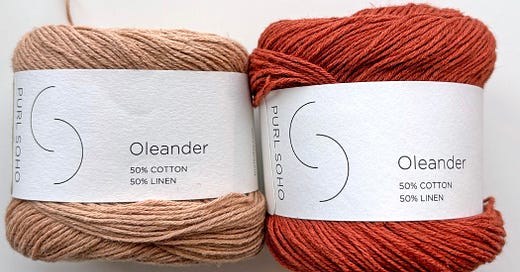



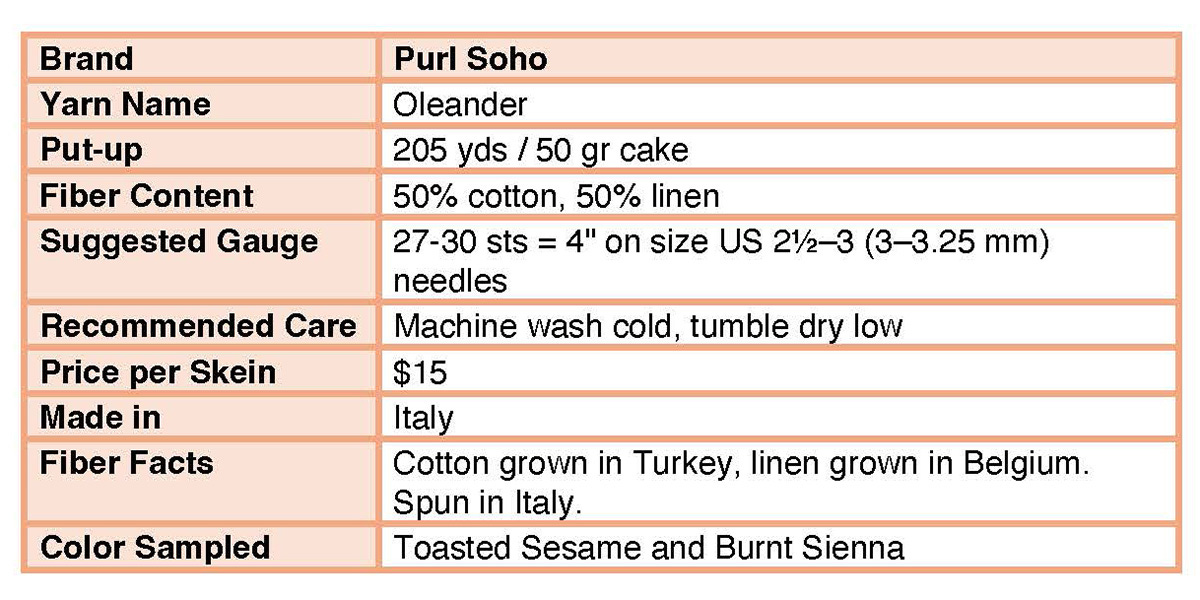
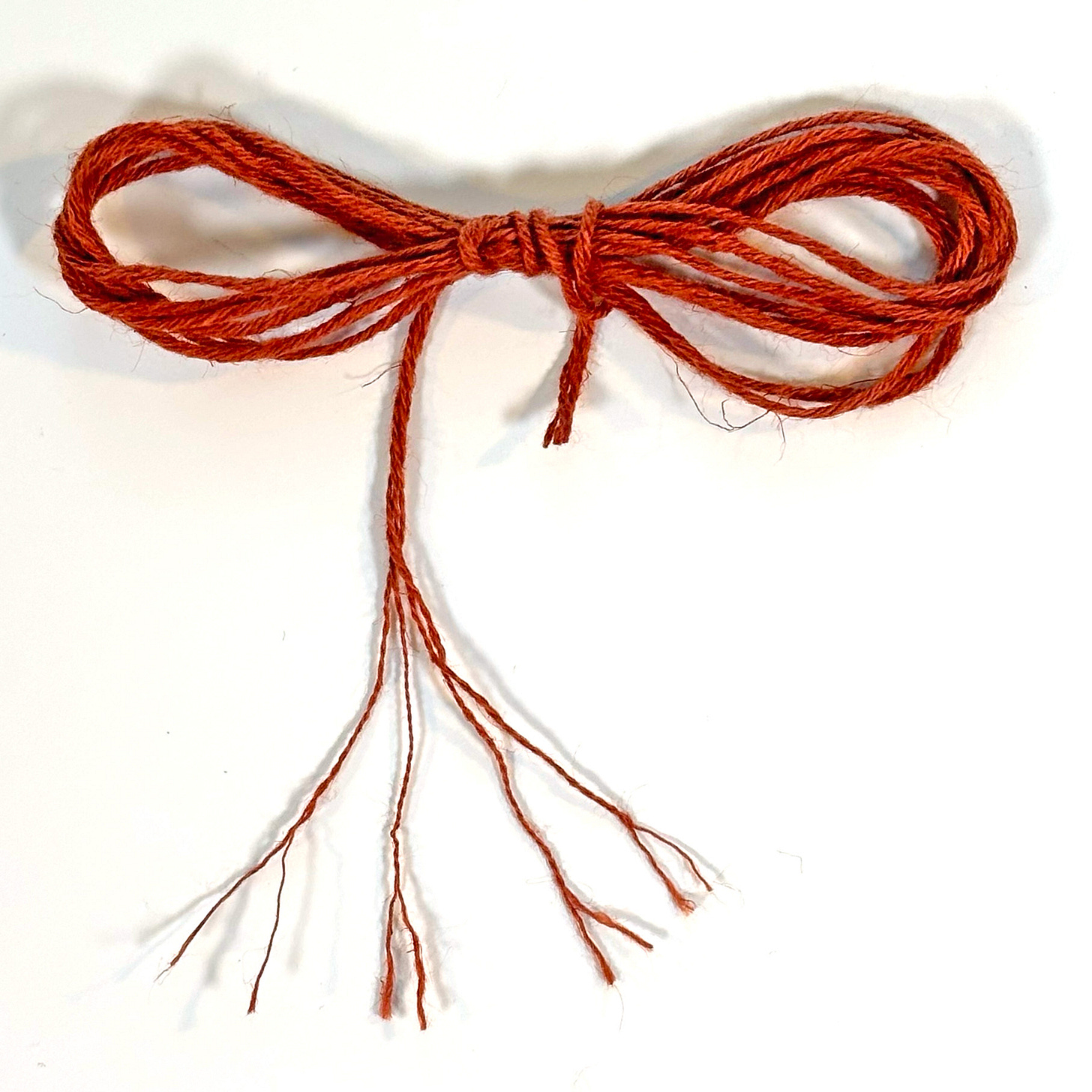
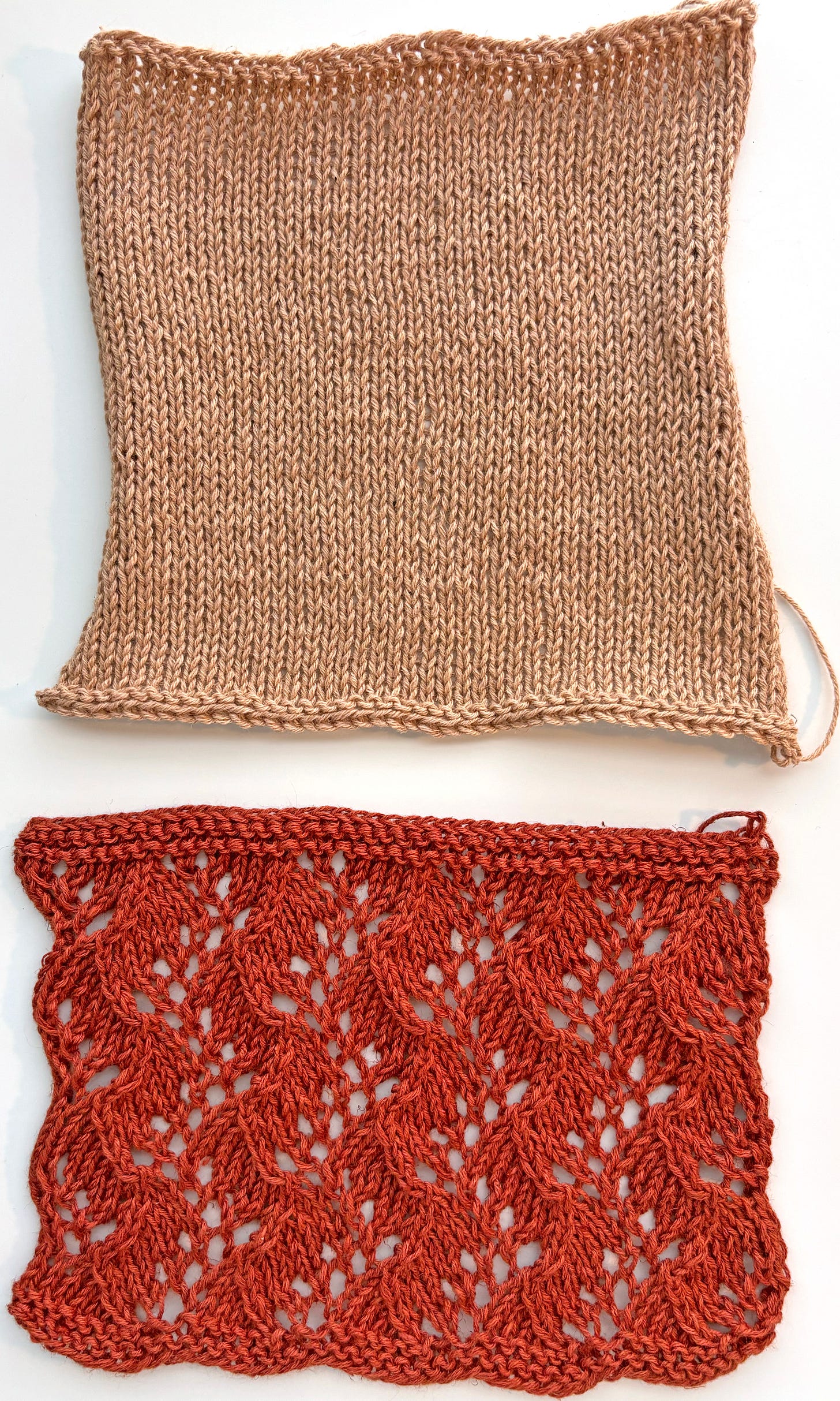
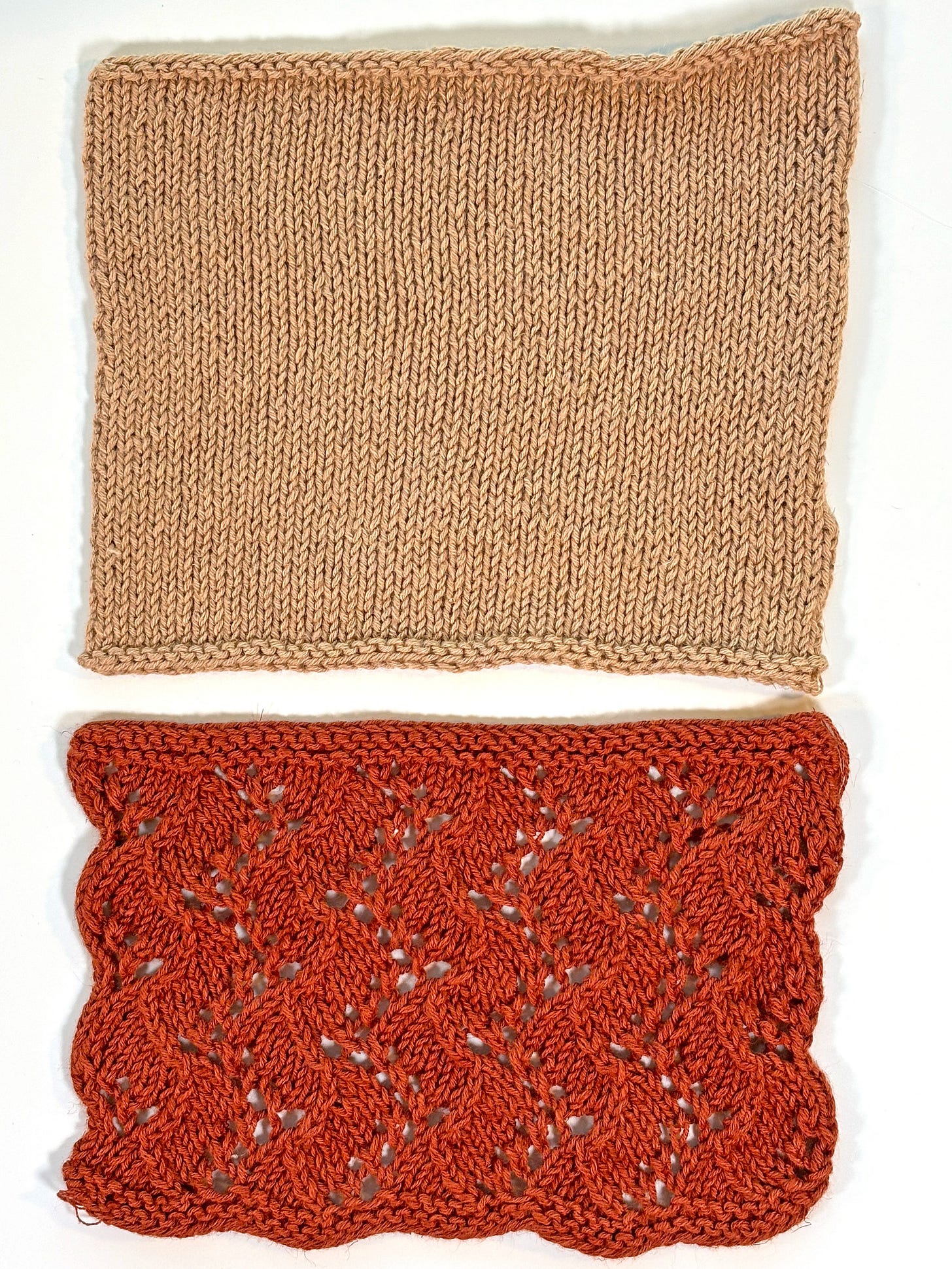

Thank you for the details about the plant fibers. Your swatch looks lovely. I have had the plant fibers always grow a bit when knitted and washed but woven (cotton) fabrics always shrunk in the first wash. I’ve never tried knitting lace with plant fibers though.
The lace swatch is so pretty, as you suspected, the Oleander yarn definitely lends itself to lace knitting. Another excellent yarn review, thank you.